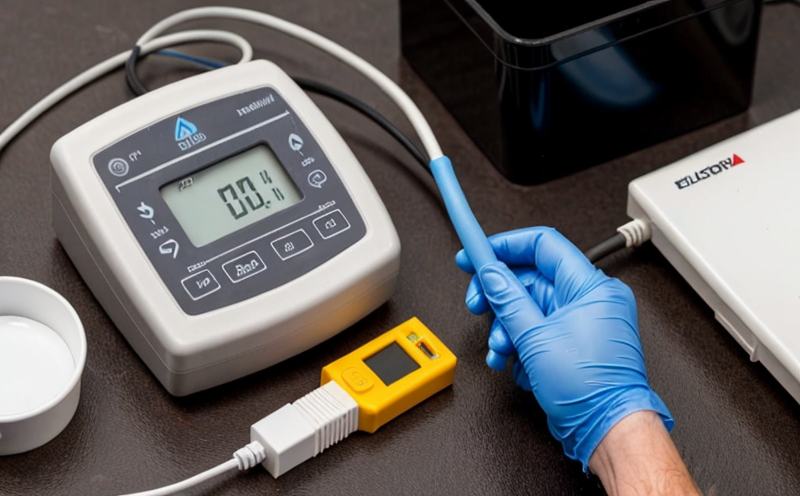ASTM G61 Electrochemical Testing of Marine Environments
The ASTM G61 standard is a cornerstone in the assessment and understanding of corrosion behavior in marine environments. This testing method evaluates the susceptibility of materials to localized pitting corrosion, which can be particularly detrimental when exposed to saltwater. Saltwater, characterized by its high chloride content, creates an aggressive environment that exacerbates the onset and progression of such corrosive processes.
The ASTM G61 test is designed for materials commonly used in marine construction, maritime operations, and offshore oil platforms. It provides a comprehensive understanding of how different metals and alloys react to the harsh conditions found in seawater environments. This includes exposure to both static and dynamic saltwater solutions, which are critical for real-world applications.
The testing process involves immersing specimens in chloride-containing solutions that simulate marine environments under controlled laboratory conditions. The test parameters include temperature, humidity, and the concentration of chloride ions, all of which play a significant role in the corrosion rate. Specimens are subjected to anodic polarization to accelerate the onset of pitting corrosion.
ASTM G61 is widely recognized for its rigorous standards that ensure accurate and repeatable results, making it an essential tool for quality managers, compliance officers, R&D engineers, and procurement specialists in industries where material durability under marine conditions is critical. This testing method not only helps in selecting the most suitable materials but also aids in optimizing design to enhance performance and extend service life.
The significance of ASTM G61 lies in its ability to predict the potential for pitting corrosion in various environments, thereby enabling proactive measures against corrosion failures. By understanding the mechanisms behind localized pitting corrosion, manufacturers can develop robust protective coatings and treatments that significantly improve material longevity.
Furthermore, the test results provide valuable insights into the effectiveness of different protective strategies. This information is crucial for product development teams who need to balance cost, performance, and environmental impact in their designs. The ASTM G61 method ensures that materials used in marine applications are not only robust but also sustainable, contributing to a greener industry.
Compliance with ASTM G61 standards is essential for industries involved in the design, manufacturing, and maintenance of products exposed to marine environments. This includes shipbuilding, offshore oil platforms, coastal infrastructure, and marine equipment manufacturers. By adhering to these stringent tests, companies can ensure that their products meet regulatory requirements and industry expectations.
The ASTM G61 method is particularly beneficial for those involved in research and development (R&D). It allows engineers to explore new materials and coatings under controlled conditions, facilitating the discovery of innovative solutions for marine corrosion challenges. The test results provide a clear roadmap for improving product performance and reliability.
For procurement officers, ASTM G61 ensures that they source materials from suppliers who adhere to high-quality standards. This reduces the risk of material failures in critical applications, ultimately leading to cost savings and enhanced reputation among clients.
Industry Applications
The application of ASTM G61 electrochemical testing is vast across several industries where marine environments pose significant challenges:
- Offshore Oil and Gas: Ensuring the integrity of pipelines, platforms, and other equipment in harsh marine conditions.
- Shipbuilding: Selecting suitable materials for hulls, propellers, and other components exposed to seawater.
- Civil Engineering: Evaluating materials used in coastal infrastructure such as bridges, piers, and port facilities.
- Marine Equipment Manufacturing: Designing robust equipment like pumps, valves, and fittings that operate in marine environments.
The ASTM G61 method is a vital tool for these industries, providing data on material performance under specific environmental conditions. This information is crucial for making informed decisions about material selection and design optimization.
Competitive Advantage and Market Impact
The adoption of ASTM G61 electrochemical testing offers significant competitive advantages in the market:
- Innovation: By understanding corrosion mechanisms, companies can innovate new materials and coatings that enhance product performance.
- Reputation: Compliance with high standards such as ASTM G61 enhances a company's reputation for quality and reliability.
- Risk Mitigation: Early identification of potential corrosion issues through rigorous testing helps mitigate risks associated with material failures in critical applications.
- Sustainability: By selecting durable materials, companies contribute to more sustainable practices within their industries.
The market impact of ASTM G61 is profound as it sets a benchmark for quality and reliability. Compliance with these standards ensures that products meet regulatory requirements and industry expectations, thereby increasing market competitiveness.
Use Cases and Application Examples
| Use Case | Description |
|---|---|
| Corrosion Monitoring: | ASTM G61 helps in monitoring the corrosion behavior of materials over time, enabling timely interventions to prevent failures. |
| New Material Development: | The test is crucial for R&D teams looking to develop new alloys and coatings that can withstand marine environments more effectively. |
| Supplier Evaluation: | ASTM G61 results are used by procurement officers to evaluate the quality of materials supplied by different vendors. |
| Regulatory Compliance: | The method ensures that products meet regulatory requirements, particularly in industries like offshore oil and gas where compliance is critical. |
| Design Optimization: | By understanding the corrosion behavior of materials under specific conditions, engineers can optimize designs for better performance and longevity. |
| Risk Management: | The test results inform risk management strategies by identifying potential areas of concern in marine applications. |
| Sustainability Initiatives: | Compliance with ASTM G61 supports sustainability goals by promoting the use of durable and efficient materials. |
The ASTM G61 electrochemical testing method is not just a compliance tool but a strategic asset for industries dealing with marine environments. It provides critical insights into material performance, enabling informed decision-making that can significantly impact product quality and market success.





